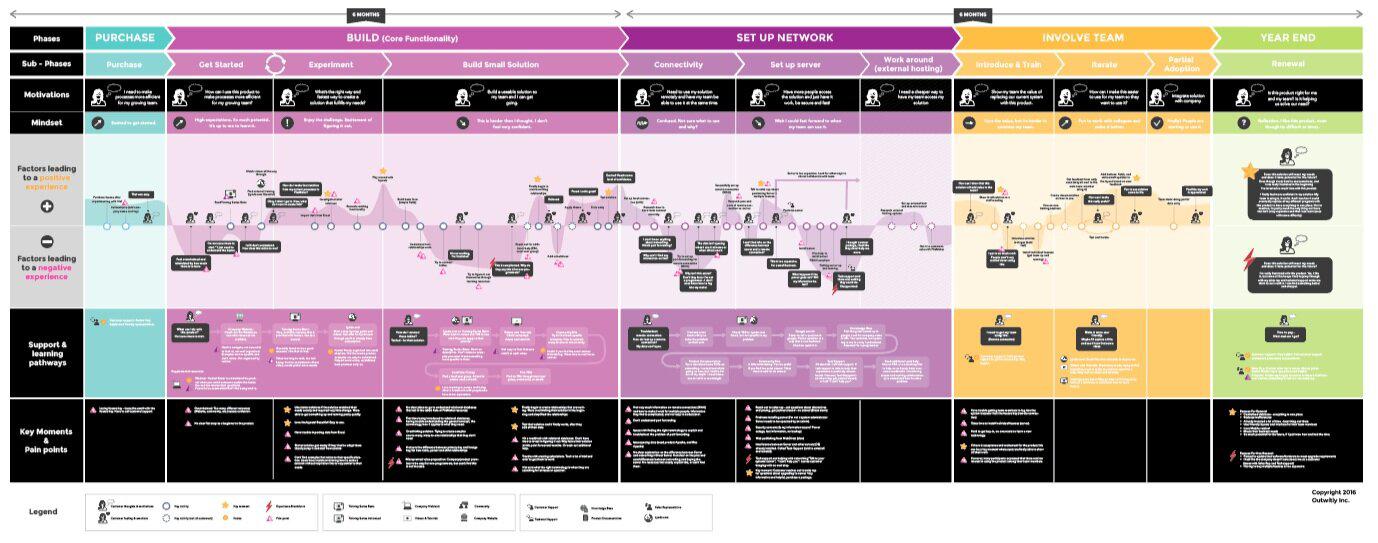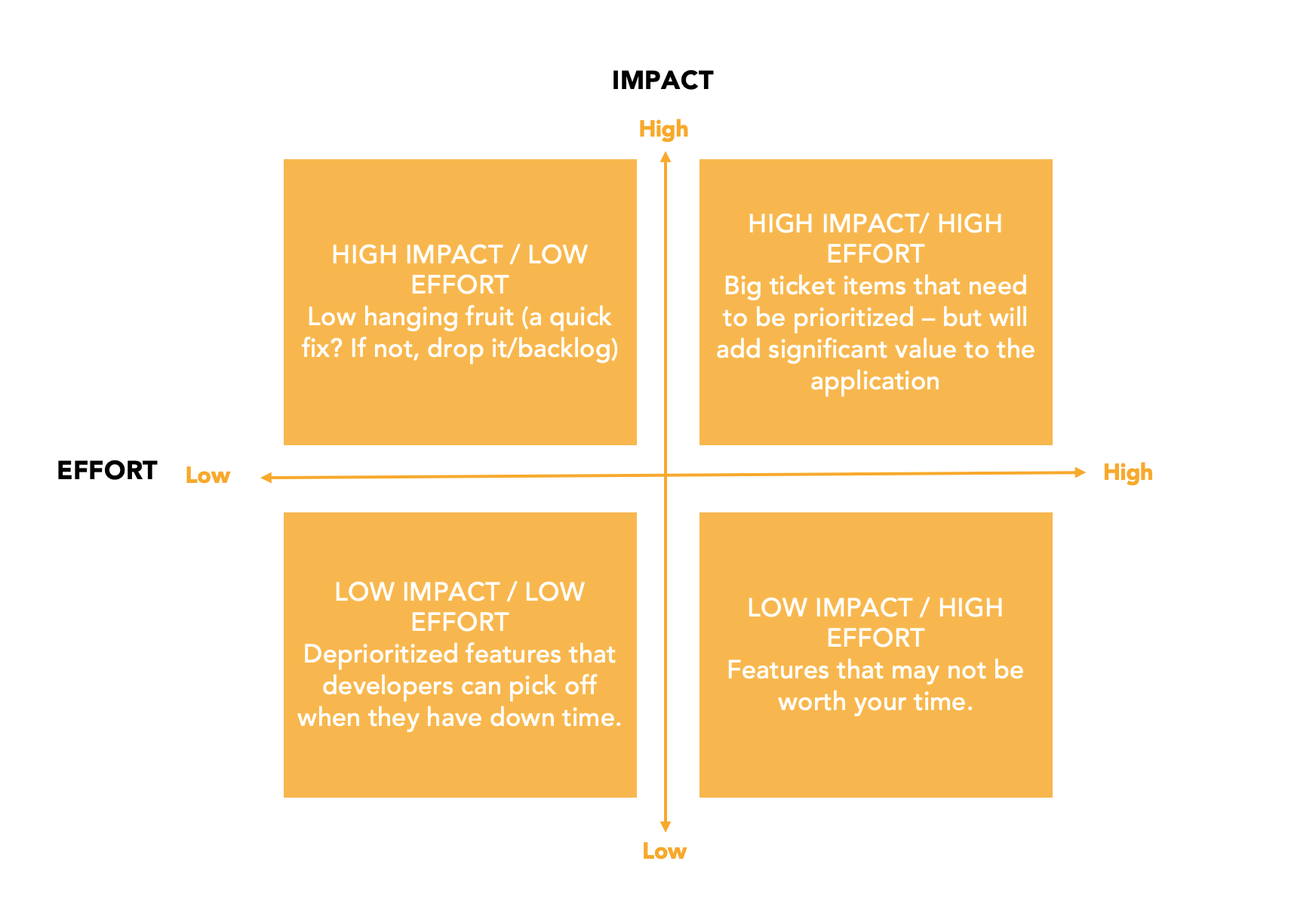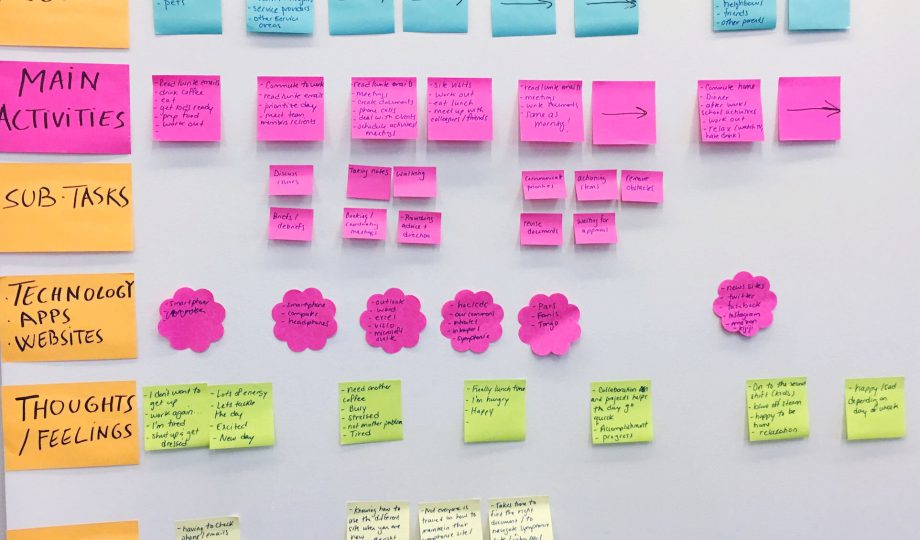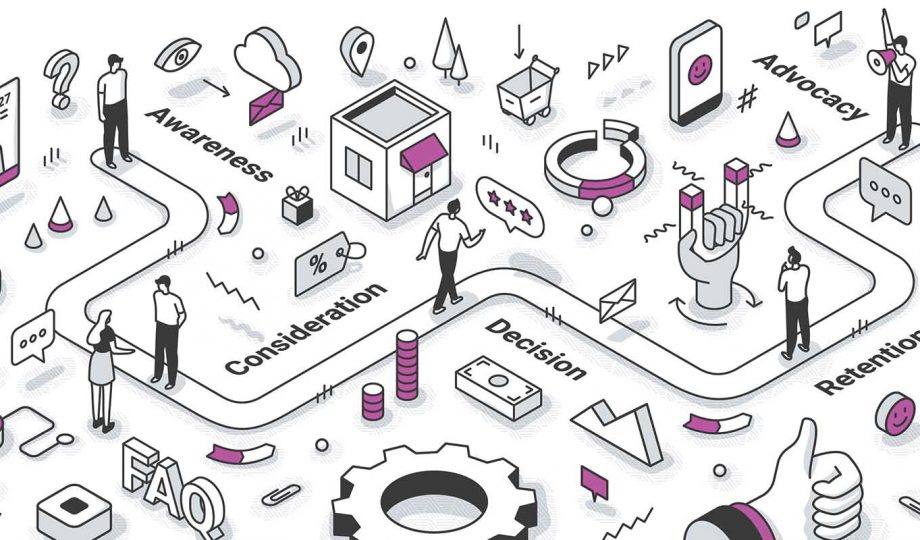In this three-part blog series, we’re breaking down one of our favourite service design tools: Customer Journey Maps! We cover:
-
Customer Journey Mapping 101: What are customer journey maps, and why do you need them?
-
Customer Journey Mapping 201: How to Research and Build a Customer Journey Map
-
Customer Journey Mapping 301: Designing for the future, evolving your map, and making it actionable (this post)
In this final instalment, we explore tools and techniques to ensure that the customer journey maps you’ve carefully researched and crafted are highly actionable, and that they continue to evolve alongside your organization or team.
Here are our TOP FIVE methods for really utilizing customer journey maps to their full potential, and communicating this powerful tool across teams.
1. Host a Town Hall Meeting
A “town hall” meeting is a gathering that brings together the whole organization (likely being held over Zoom these days…) and they typically take place on a monthly or quarterly basis. For your next town hall or company-wide meeting, get your customer journey map on the agenda.
-
Email the meeting chairs, or whoever holds power over the agenda––it’s really worth sharing your journey map with everyone, and getting folks excited!
-
Prepare a short but compelling presentation about how you crafted the journey map and how it can be used. Ensure you tell a story, since a journey map is a very powerful visual storytelling tool.
-
Communicate that you are open for feedback. Let your colleagues know that you welcome their advice and ideas for further developing the journey map.
-
Incorporate this feedback wherever it makes sense to do so. (Note: Actual customer research should reign supreme. Don’t feel compelled to incorporate feedback from others unless it is truly useful.) This activity is still a good way to allow everyone to feel involved and part of the larger process. It will also get other departments interested and promotes collaboration instead of competitiveness across teams.
2. Print It Out and Hang It Up in the Office
In Part 2 of our Journey Mapping series, we mention that there is nothing more impressive than a huge, colourful, 10 foot customer journey map banner hung in the office corridor or in a space with high foot traffic. This can be another great way to encourage and gain feedback from coworkers, as people will be more likely to stop and examine the journey map during lunch or with a coffee in hand.
The feedback you’re looking for here is more about the “look and feel” of the map, or ideas for improvement and new opportunities. As we discuss above, try not to incorporate feedback that will contradict the actual customer research you performed to build your journey map.
-
Print your map out in full size at your local print shop––we always prefer a matte finish––and post it up in a common area.
-
Leave sticky notes (and hang a Sharpie from a string) nearby so that people can add remarks, questions, or additional information to the journey map itself.
-
Note about COVID-19: Since many of us aren’t at the office anymore, include the journey map in your organization’s internal newsletter, post it to the Intranet, or share within Slack teams––the point is to find the best way to internally circulate the journey map and ask for feedback.
View this post on Instagram
Click through for a sample customer journey map poster…
3. Find Champions
Champions are people who are excited about a project and who are willing to bring it up in conversations with others at your organization. You must choose your customer journey map champions wisely! Selecting the right people to pass your message along is critical to gain buy-in for new initiatives spurred by the insights from your customer journey map.
-
Identify 10 people in your organization who are: positive, self-starters, charismatic, and who seem to have friends or know people across departments. Remember, these are not necessarily executives or managers. You’ll want to have a good mix of different seniority levels, folks from different departments, and so on. The only requirements are that they must be excited, optimistic, and have cross-departmental collaborations or influence to be really effective.
-
Hold a meeting with these 10 people. Let them know you are inviting them to be part of this special project.
-
Make the “ask”. Introduce your customer journey map and all the research that went into it, and explain what you’d like the next steps and outcomes to be––and how these 10 people can help. Next, give them at least three specific items they can act on. For example, you might ask them to host a meeting with their teams and introduce the research insights within their departments.
-
Omit anyone who says they are not interested in helping.
-
Send around a monthly email with updates regarding the customer journey map, new initiatives that are kicking off, and/or any changes/improvements that have been updated.
4. Develop a Future-State Map
Using your “Current State” Customer Journey Map to develop an “Ideal State” or “Future State” Journey Map is a great way to collaboratively solve some of the frustrating or inefficient parts of the current customer/user experience. This activity will allow you to imagine what the service or user experience would look like if the journey was seamless, optimized, and memorable. Future-state mapping is an activity that should involve many different departments, and it can really bring your vision to life. You’ll discover exactly what needs to change by identifying gaps between the current and future states, and then you can set a plan to implement those changes (see Step 5 below).
-
Bring a cross-departmental team together (consider involving your Champions) and schedule a workshop to brainstorm the future-state journey.
-
In this workshop, list each pain point identified in the current state map, and use these as a basis for idea generation. Try to transform all pain points into opportunities.
-
Collaboratively re-imagine the journey. Consider drawing/writing directly onto a printed copy of your current state map with Sharpies––mark it up! Cross out phases or touchpoints that don’t make sense, and ask “How could this be better for the user? Simpler? Easier? More memorable?”
-
Redraw your future-state journey map with opportunities and action items to make them real. Visualize the map and make it beautiful as you did with your current state journey map––and then circulate it (start with Step 1 above).
5. Prioritize and Take Action
Customer journey maps also have the benefit of directly highlighting pain points and major opportunities to help you improve your customer/user or employee experience––and these can be turned into initiatives and prioritized. For each opportunity identified in the journey map, assign a related action item/project, and try to give each action item an owner with an associated timeline.
-
Identify and list all easily identifiable opportunities from the journey map.
-
Rank each opportunity by effort and value (see diagram above). This will help determine how to prioritize your initiatives. We also recommend using data from the journey map to help you decide what is critical to the customer experience and what would just be nice to have.
-
Create a roadmap with milestones and dates based on your prioritized actions and opportunities.
-
Add project owners for each action item to generate accountability.
And there you have it! With this three-part series, you now possess ALL the tools and know-how you need to research, craft, and communicate a powerful customer journey map to get your products, services, and organization moving forward.
Resources we like…
-
Mapping Experience: A Complete Guide to Creating Value through Journeys, Blueprints, and Diagrams by Jim Kalbach. Outwitly CEO/founder Sara Fortier’s work is featured on page 97.
-
Start Innovating with Future-State Journey Mapping by Tony Costa






